I can trace my career as a literature academic back to my childhood days reading, re-reading and re-re-reading C S Lewis’s The Lion, the Witch and the Wardrobe. I was transported, along with Lucy and her siblings, to the magical world of Narnia with its talking animals and existential conflict with the White Witch. I was also enthralled by their escape from the humdrum world of reality, something which all children, I think, yearn for. I dabbled a little in the other six books in the series, but none held my attention like LWW.
And now I find it one of the most satisfying books to teach on our Children’s Literature module. Recently I had the joy of exploring the text with visiting Ukrainian writing students. We had a great discussion which revealed the contemporary resonances of occupation and facing down a tyrant. This week it is 75 years since the first publication of The Lion, the Witch and the Wardrobe.
While it’s always tempting to talk about the realm of the imagination, the magic and the simplistic battle between good and evil, there is so much more to say. There is the context of wartime evacuation and rationing, and the morality of collaboration (Edmund; boooo) and resistance (Aslan; hooray!!!). There is the biblical allegory of Aslan, whose sacrifice and resurrection redeems Edmund (something which we see as adult readers which we may miss as children). Aslan is described as the good news and the light; recognisable from Christian iconography. There are the familiar tropes of children’s literature: adventures without adult supervision; the secondary world of the imagination, where the children can learn important lessons about the adult real (primary) world they are about to enter (for Peter and Susan, the older children); the portal (here, the wardrobe) between these two worlds; and the pastoral world that is an escape from the harsh realities of the mechanistic world of modernity beyond the wardrobe door.
Lewis’s themes tell us much about the time of the book’s creation and the enduring concerns of childhood and its literature. We can see how he smuggles in his Christian message. We can also detect very conventional attitudes to gender, with the boys being brave and active and the girls confined to passive or caring roles. There is also a whiff of colonialism as the exoticised animals wait for the European saviours to arrive and take up their rightful place on the thrones at Cair Paravel. All of the children find the experiences in Narnia transformative, as they learn about personal responsibility, maturity and the expectations of others.
The text is complex in other ways, which we won’t attend to here: Edmund’s betrayal of the other ‘apostles’ at Mr and Mrs Beaver’s house, the White Witch as both a genie (jinn) of Arabic mythology and, simultaneously, Lilith, Adam’s pre-Old Testament first wife in the Garden of Eden. So much to think about, and so little time… But, perhaps, that is where the adventure begins.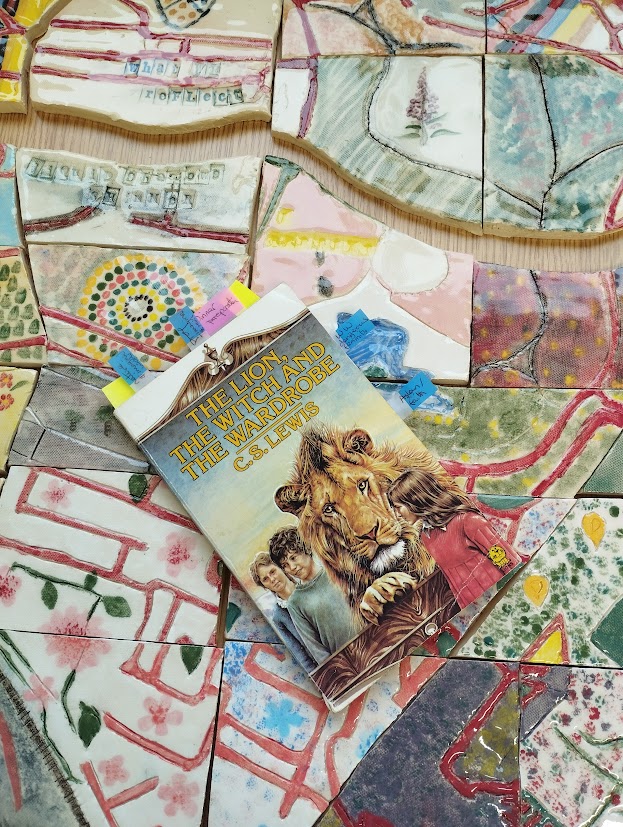
Category Archives: Uncategorized
Gatsby’s Centenary
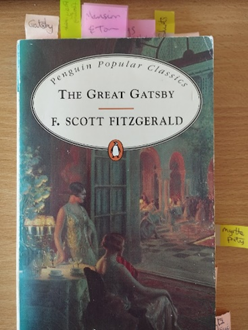
After a century of dividing students’ opinion, it’s time to take a look at The Great Gatsby, F Scott Fitzgerald’s novel of the Jazz Age, which was published 100 years ago this month. Despite its fame, very little happens: there are a few parties, a few fights and arguments, lots of drinking (leading to the fights and arguments) and, admittedly, a bit of a bloodbath at the end. Instead of plot, the novel is organized around a series of symbols and symbolic moments.
The novel is an exploration of the corruption of the American Dream (a term not coined until 1933 by John Truslow Adams) and the effect that has on a small group of wealthy young people summering in the Eggs near New York City, a fictionalized Hamptons. East Egg is where we find the aristocratic Buchanans – the beautiful but vapid Daisy and her brutal, polo-playing husband, Tom. West Egg is where all the New Money lives – the Irish and Eastern European migrants who have become rich from speculating on the markets and entertainments, but no family history. Gatsby, a poor boy made good through questionable means, was Daisy’s lover before the war, and he wants to return to those times by taking Daisy away from Tom’s philandering. The East-West opposition refers to America’s founding principle of Manifest Destiny; the inevitable settlement of the continent from ‘sea to shining sea’. Our narrator, Nick Carraway, has reversed the journey of West to the Frontier, instead travelling East to try his hand at speculating on New York’s financial markets. Notionally, then, the novel is the story of Gatsby’s battle with Tom for the affections of Daisy, but below the surface it is a tale of value and possession, gender and power.
Gatsby represents the vulgar and quick acquisition of wealth, represented by his lavish house and parties, Tom represents the heritage of the families who founded the nation and accumulated wealth over many generations, typified by his string of polo ponies. Other key symbols include the famous green light at the end of Daisy’s dock (green and insubstantial, like money and value), the God-like but impotent eyes advertising the oculist Dr Eckleburg in New York which look out over the degraded landscape of the valley of ashes and, most importantly, clocks and time.
The narrative compresses the events of one summer into a handful of parties and arguments before (spoiler alert) the deaths of Tom’s lover, Myrtle, her husband, and Gatsby. Most tellingly, Carraway connects the discovery of America and its continental possibilities at Gatsby’s ambitions of rising from poverty to great wealth and the possession of Daisy as a validation of his rise. To do this, though, he must return to the adolescent self she had loved before the ruptures of the Great War. As Carraway stands on the lawn of Gatsby’s empty house, he imagines how:
the inessential houses began to melt away until gradually I became aware of the old island here that flowered once for Dutch sailors’ eyes—a fresh, green breast of the new world. Its vanished trees, the trees that had made way for Gatsby’s house, had once pandered in whispers to the last and greatest of all human dreams; for a transitory enchanted moment man must have held his breath in the presence of this continent, compelled into an aesthetic contemplation he neither understood nor desired, face to face for the last time in history with something commensurate to his capacity for wonder.
…
Gatsby believed in the green light, the orgastic future that year by year recedes before us. It eluded us then, but that’s no matter—tomorrow we will run faster, stretch out our arms farther…And one fine morning—
So we beat on, boats against the current, borne back ceaselessly into the past.
Paul Auster
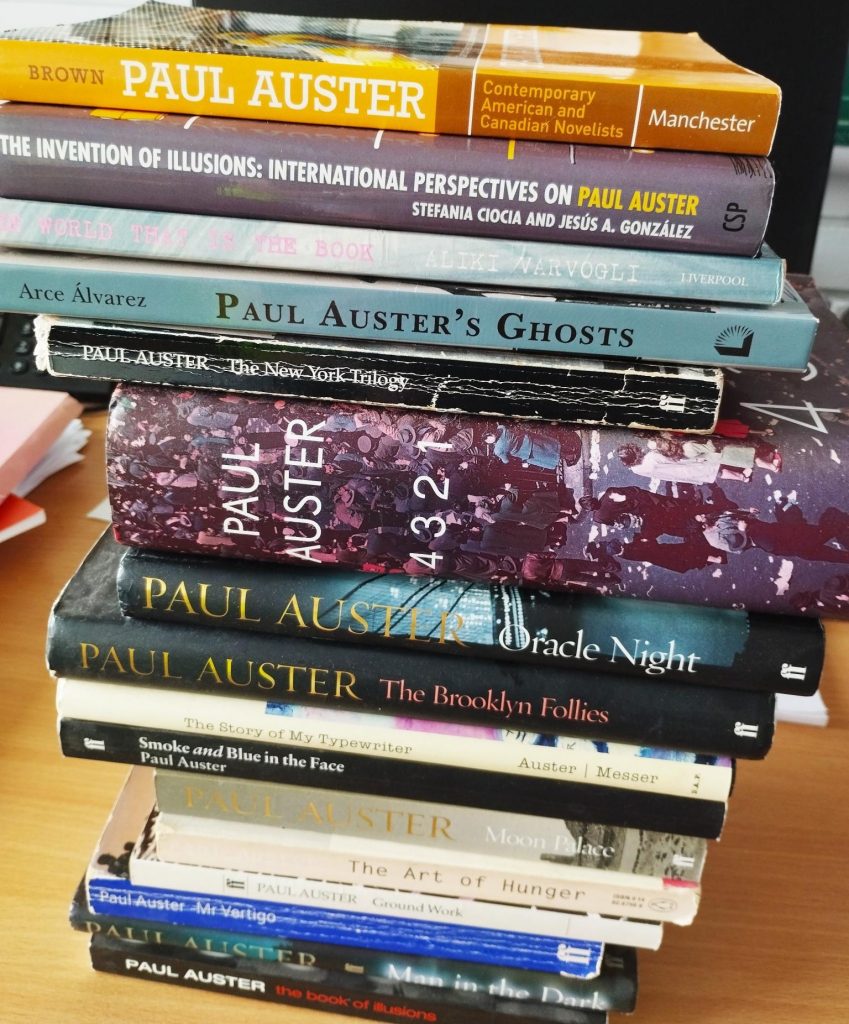
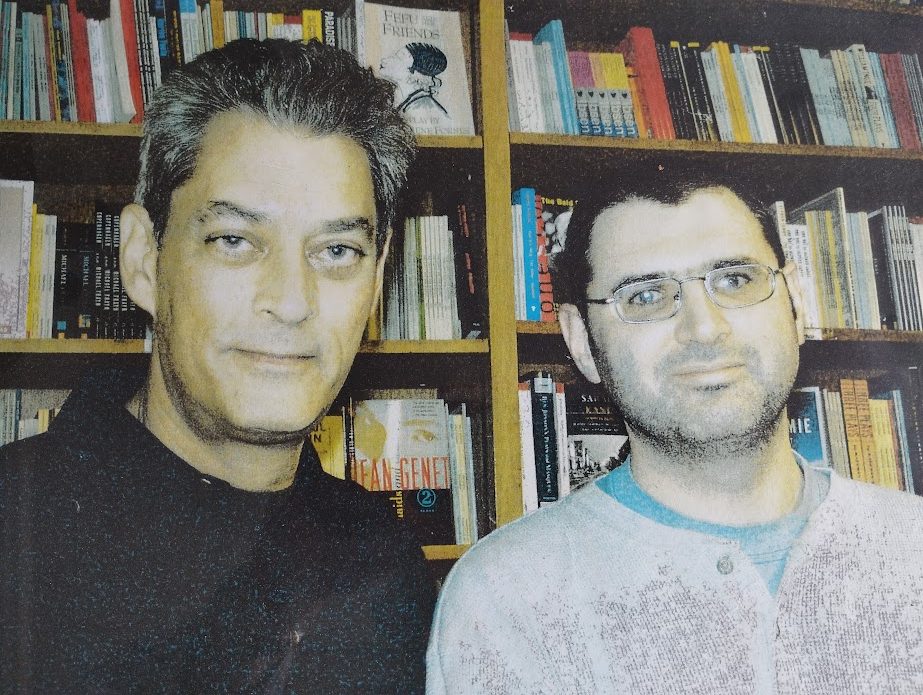
In his last novel, Baumgartner, Paul Auster contemplated the nature of loss and mortality. Auster had been ill with lung cancer for some time before his death this week, and this novel now, in retrospect, has the feel of a love letter and a farewell to his wife, the novelist and academic Siri Hustvedt. Death has haunted Auster and his work. In the early autobiographical meditation on writing, The Invention of Solitude, Auster recounts the tale of his grandmother shooting his grandfather and the effect on him of the early death of his own father. In The New York Trilogy, the novel that brought him to international attention, Quinn, the central character in the first part of the trilogy, has become isolated and alienated from his New York environment by the unexplained deaths of his wife and son. Quinn recounts how he can still feel the impression of his young son, Daniel, on his chest. Auster’s own son, Daniel, died in adulthood of a drugs overdose. Auster’s life, then, was lived in the shadow of death and tragedy, and we can see more than the traces of that experience in his novels.
That isn’t to say that his substantial body of work will only be remembered for its focus on loss. Many of his works employed his beloved New York City as both a setting and a character. I met him on a research trip to the New York in December 2001, just weeks after 9/11, and we shared a cab back from Manhattan to Park Slope in Brooklyn, where he lived in an impressive brownstone with Hustvedt. We looked back from the cab window as we crossed the East River and mourned the loss of the towers and the dead of that terrible day.
Auster’s early life was peripatetic and adventurous. He grew up in New Jersey and went to Columbia University in New York. He was fluent in French and spent time in Paris on his degree and returned there to work as a translator. He collected and edited the works of French modernist poets in translation, particularly Mallarmé. At the same time he was writing his own poetry, which he considered his best work. The poems are small, taut, and intense. He also worked on merchant ships and as a census collector back in the US. These episodes provided him with rich material to shape his characters.
It is possible to distinguish – a little arbitrarily, perhaps – four phases to Auster’s career. The work has moved from poetry and non-fiction (collected in Ground Work and The Art of Hunger), through the early fictions (The New York Trilogy, Moon Palace and others), to the films of the mid-1990s, and subsequently to the later novels (including The Book of Illusions – my favourite from this period – and 4321). Each phase is distinct in the form and the themes the work interrogates, while key themes of language, identity, solitude, and the power of writing and storytelling are held in common, explored, and developed.
One of the most distinct features of Auster’s early work is the way the lives of his writer-characters frequently collapse into the lives of the characters they create, consistently calling into question the boundaries of where the “real” world ends and the fictional world begins and, in a postmodern way, questioning the capacity of literature to represent reality at all. Auster’s struggle toward reality is problematised by anxieties about the capacity of language to represent, language as a way of being in the world.
Auster’s films, Smoke and Blue in the Face (1995), represent a shift in both medium and tone. There is a warmth and optimism about the films which is felt only occasionally in the preceding novels. This optimism expresses itself through community and, in particular, in the representations of Auster’s own home borough, Brooklyn.
After the films, Auster’s fiction takes on a distinct change in subject matter, tone, and address. Two themes dominate this body of work. The idea of a place of imagination to escape to and remake the self comes to dominate Timbuktu and 4321, while an exploration of the genesis of a story and the essence of literary art are at the center of Oracle Night and Travels in the Scriptorium.
Auster’s body of work is impressive and it reminds me of the work of Fanshawe in The 3rd part of the Trilogy, which fills two suitcases and is as heavy as a man. All told, there are sixteen novels, nine non-fiction and autobiographical works, six collections of poetry, four films and many collaborations.
Fantasy – Realms of Imagination: four ‘jaw-on-the-floor’ moments from the British Library’s current exhibition.
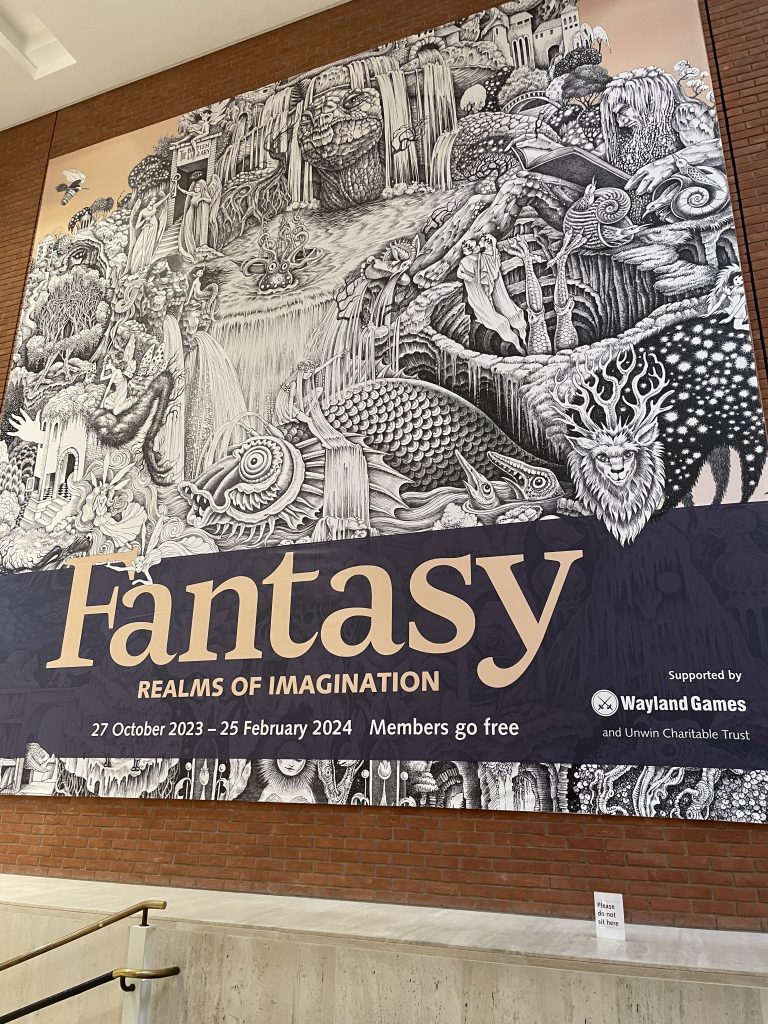
Undeterred by winter rains, I fought my way to the bustling metropolis for the British Library’s Fantasy exhibition and was handsomely rewarded by an inspirational feast for the imagination. Here are my top 4 exhibition moments, ranked and in reverse order:
4 – Angela Carter’s notes for The Bloody Chamber:
‘insert: first view of the castle ‘…words cannot convey to what extent that scene was wild & lonely & forbidding, nay, unearthly’. There’s something arresting about seeing a story you’ve known for so long in its embryonic form. Thoughts noted, struck through, re-worded – the writer, at that point, did not entirely know where those thoughts would go and what the result would be – but you know! You have the result on your bookshelf. You read the book as an undergrad and you have taught it to your own students. I found myself thinking ‘that’s it, Ange, keep going!’…
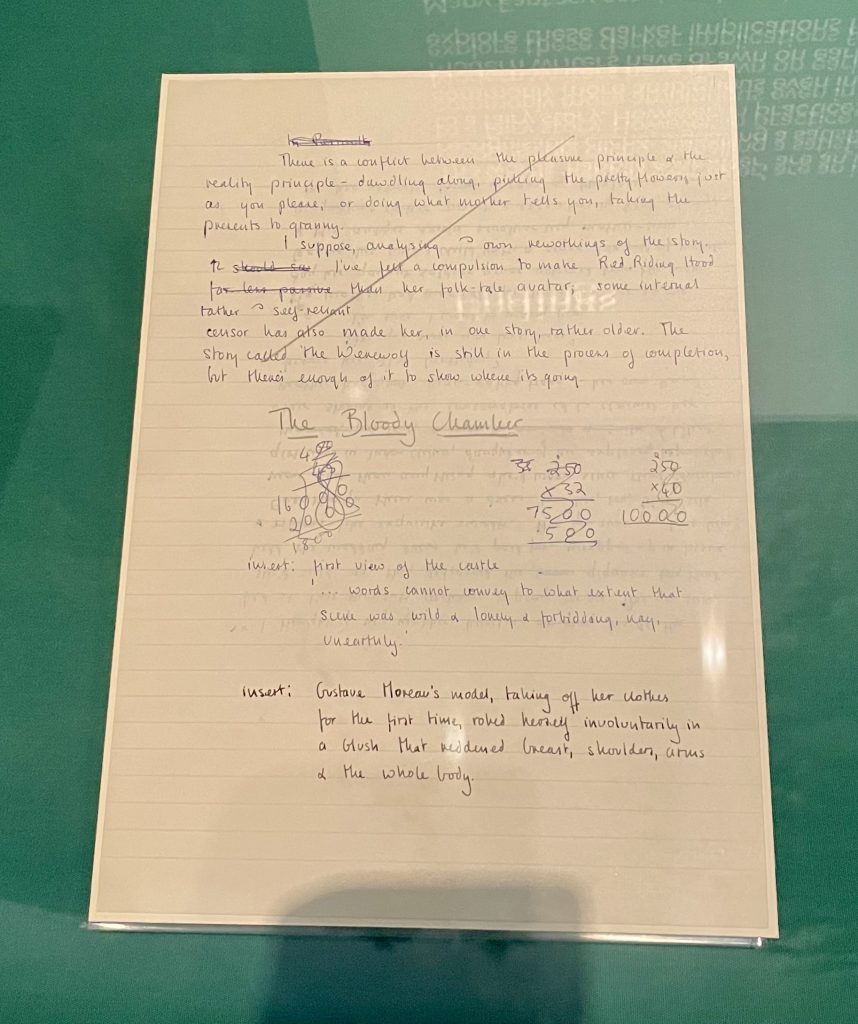
3 – C.S. Lewis’s notes for The Lion, the Witch and the Wardrobe:
Another amazing little bit of scribbling from C.S. Lewis – his original handwritten idea for the first book (to be published) from his Narnia world. Here, the four children have different names: Ann, Martin, Rose and Peter – ‘But it is most about Peter who was the youngest’. ‘They were sent to stay with a kind of relation of Mother’s who was a very old Professor who lived all by himself in the country’. I cannot see any mention of the wardrobe here, but the upside down notes below say (as far as I can make out) ‘1. Science & Religion a. miracles b. origins.’ The rest is a mystery to me, but so exciting to see the start of a tale that shaped my imagination from childhood.
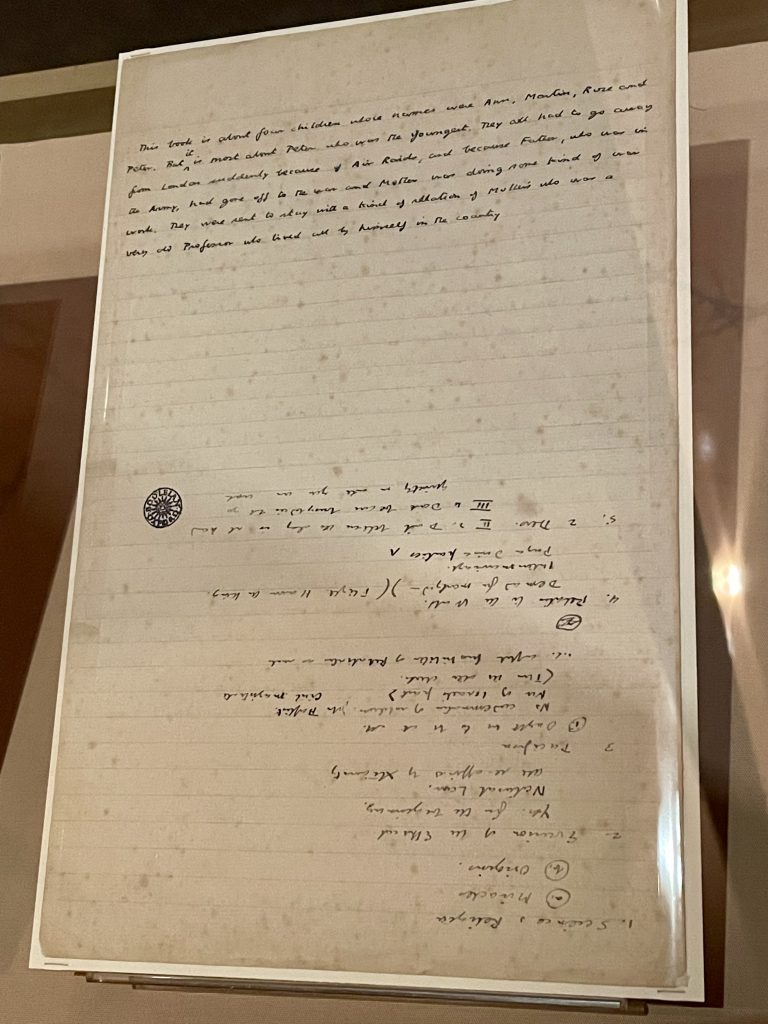
2 – Beowulf and Game of Thrones:
Fantasy is not niche. Fantasy is not new. Fantasy is, and has always been, fundamental to our ways of conveying meaning through story. Here is the oldest surviving Fantasy manuscript from the UK – Beowulf, the only manuscript of it that we know of (scribe unknown, poet unknown, date c. 975-1025 CE), with an example of contemporary fantasy writing beside it – George R. R. Martin, a book from his story-cycle A Song of Ice and Fire (Folio Society edition, 1996). A good millennium of Fantasy writing. On the wall, ‘Needle’ – Arya Stark’s sword, with harness – a prop from the popular Game of Thrones TV series based on Martin’s books.
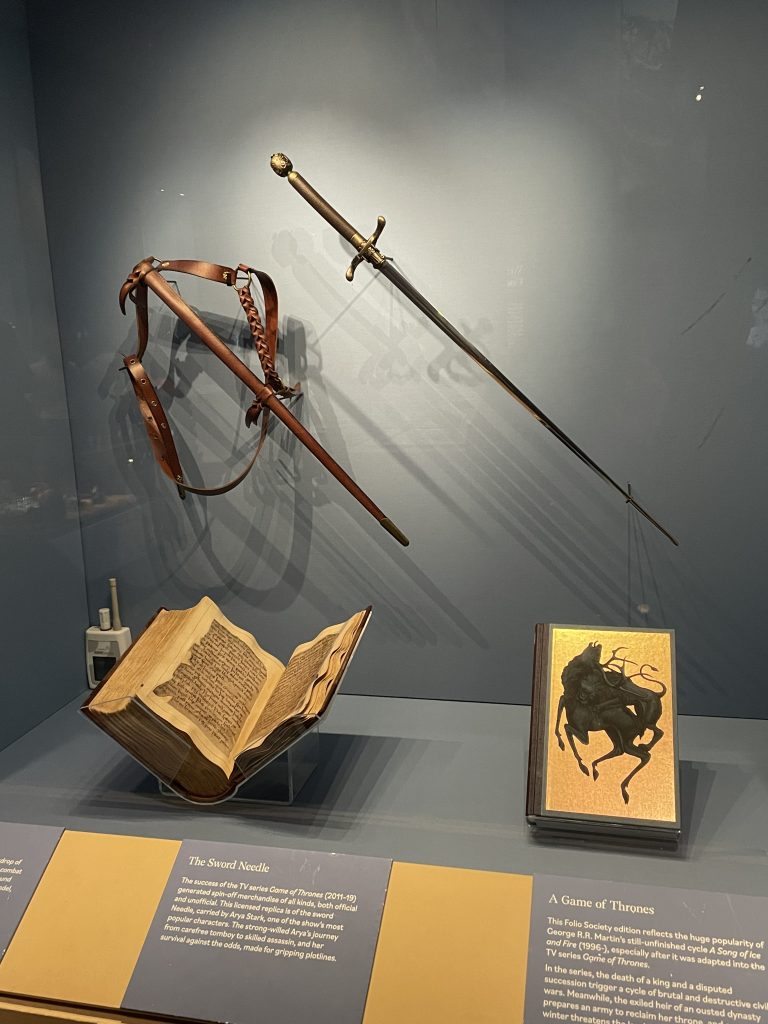
1 – Susanna Clarke’s plan of tides for Piranesi:
If you have read Susanna Clarke’s 2020 novel Piranesi, and love it and wonder/fret about how the main character is getting on just about all of the time, then it’s really hard not to blub uncontrollably in front of the notes lent to this exhibition by Susanna Clarke. These two sheets of paper detail her plan of the tides that swell around The House (Kind and Beautiful). It feels like work that didn’t really need to take place – having read the novel several times now, I have never thought too much about the logistics of the tides, even as Piranesi himself notes them – but it is work that has been done, nonetheless, just in case, just because, and it shows an attention to detail, a care and respect for Things that reverberates through Piranesi himself. There I was, in a wet, dim, windy London (not too far from Batter Sea), looking at a document that read not as a plan of a literary fantasy world but as a guide from a traveller who had inhabited another dimension. note 1. ‘Flooding centred on the 9th Vestibule. This is the tide from the South. The High Tide will rise at 11.30 a:m. The diagram is not right. It This will produce a certain amount of flooding which would in the normal way subside quickly. The problem is the subsequent High Tides’. In an age of sea-level rise, and in a week when the Trent had flooded very badly (a river which is tidal for 50 miles), we are ourselves at the Mercy of the Tides.
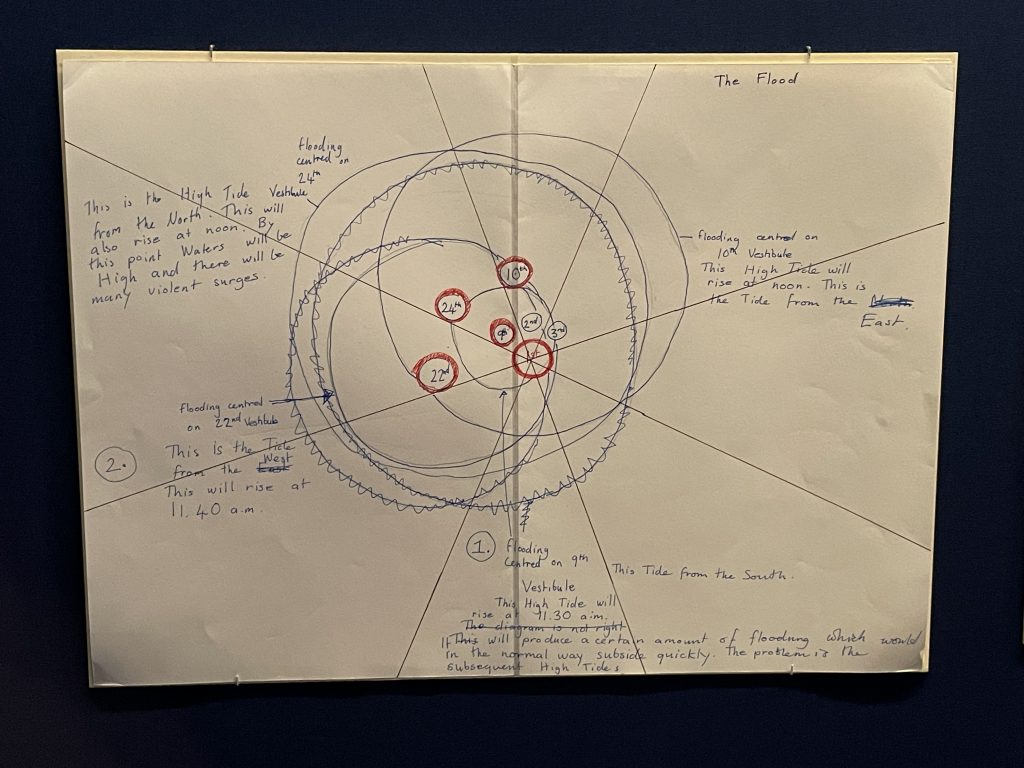
My jaw continues to be challenged gravitationally by the exhibition book: Realms of the Imagination: Essays From the Wide Worlds of Fantasy – a weighty tome (what else?) stuffed with short, accessible essays by giants of the Fantasy world in its academic and creative expressions (Neil Gaiman, Cristina Bacchilega, Teri Windling), images of the exhibition artefacts, and details of its astounding bespoke artwork by Sveta Dorosheva https://blogs.bl.uk/living-knowledge/2023/10/interview-with-sveta-dorosheva-artist-for-fantasy-realms-of-imagination.html
Cormac McCarthy
Cormac McCarthy, one of the most important American writers of the last 50 years, has died at the age of 89. His writing career spanned from 1965 until the publication of his last novels in 2022. He is best known for the novels The Road and No Country for Old Men, both adapted successfully for the screen. His work, certainly in style, is often compared to that of Faulkner, in that his control of language and punctuation defies our conventional expectations but maintains the reader’s attention and understanding. His use of language and imagery, and his comparison to great writers of the early 20th century, has led to critics labelling him a late modernist who challenged the emerging orthodoxies of postmodernist indeterminacy. It was the Border Trilogy novels – All the Pretty Horses (1992), The Crossing (1994) and Cities of the Plain (1998) – which brought him to public prominence. These novels reflect on the frontier as a key part of America’s founding myth. The best of these, for me, is All the Pretty Horses. A revisionist Western, it transplants the battle between man and the wilderness from Texas to Mexico. John Grady Cole and Lacey Rawlins cross from modern Texas into what the sixteen year olds hope will be the unspoilt wilderness that their predecessors tamed on the American frontier. The novel is a quest narrative and a bildungsroman.
The opening pages encourage us to think that we are in the 19th century. The candle, the hat, the portraits of ancestors all signify an earlier time than the actual setting. Death, repeated here, suggests a finality, an ending; but also the possibility of new beginnings. The calf bawling and the prairie reveal to the reader that this is an agricultural area and that we are in American West. Also, the train challenges our expectations. It symbolises change and industrialisation, reinforced by the language: ‘boring’, ‘howling’, ‘bellowing’. That the train comes from the East, all that the West has stood in contrast to, is important. The ‘endless fenceline’ demonstrates the scale of the landscape. Fences are also symbolic of the taming nature and the domestication of the land. Later, the boys have to pull out the staples to allow the horses to pass through fences. The Mexican cook suggests that the boundaries between the cultures either side of the border are no longer as distinct as they used to be, and also Texas’ history as a part of Mexico.
The themes of the novel are very much those of the conventional Western; the battle between man and nature, a nostalgia for a simpler way of life that is attuned to the rhythms of the land, and established beliefs. Grady is trying to locate himself in relation to the wilderness in which he finds himself. He feels that the wildness inside him, a sort of primordial urge, needs to be reflected by the landscape. The narrative suggests that Mexico offers this possibility in ways that Texas couldn’t, particularly when he hears a wolf howl. The contemplation of God and religion is important as the westward expansion of America was often seen as religious obligation. The boys are to be transformed by their encounter with the pristine wilderness of Mexico, which substitutes for the Old West, into self-reliant, independent and resourceful cowboys. The zacateros they encounter on the Mexican plains represent simple agricultural workers responding to the shifts of the seasons. While they are friendly, they are not represented in a romantic way, instead being dishevelled and dirty.
Their exploration of this ‘new Eden’ are punctuated with places that represent both the garden and hell. The Hacienda de Nuestra Senora de la Purisima Concepcion (I’ll leave you to do your own translation. The reader is pushed to translate a lot of Spanish dialogue, forcing us into active readers) is vibrant and abundant with nature’s bounty. America is a nation whose identity is shaped through this idea of the battle between the settlers and nature. The horses are symbolic of nature and the wilderness. Grady’s ability to subordinate the horses reflects the ambitions of the early American settlers. However, there are two ambiguities here: the horses were introduced by Europeans and, crucially, once nature has been tamed, the frontiersman must move on to seek out new challenges and new wildernesses. This section is a biblical allegory here. We can see Grady as an American Adam in this Edenic landscape, Alejandra as the sexual temptation and Don Hector is the God-like authority who casts Adam from paradise.
In contrast, the prison the boys end up in as punishment for their transgressions demonstrates that Mexico is not a savage wilderness where they will find challenges on the journey towards manhood, but is a society they are unable to interpret. In Part III they virtually abandon travel by horse and instead become very 20th century, riding in trucks and travelling by train.
As Cole rides back through northern Mexico it reveals itself to be far more industrialised than the idealised natural landscape he had seen it for on his journey south. The crossing back into Texas is less detailed, more matter of fact. That it is Thanksgiving, an American holiday celebrating the expansion of the nation is symbolic. We see that Cole is a cowboy out of his time. Towards the end, a number of thematic concerns combine. The industrial nature of the Texas landscape is illustrated by the city lights, the highways and the oil fields. When Cole speaks Spanish to the Mexican girl at the judge’s house, she responds in English.
The certainties of the American West as a place of mythical origins is dismantled by the book’s temporal moment (mid-20th Century) and the harsh realities of Mexico. However, as a bildungsroman, it traces Cole’s development from the innocence of youth to the self-reliance and self-knowledge of manhood.
On Lady Novelists
Featured
(to mark International Women’s Day)
I use this phrase as it is one I heard throughout my youth. It has a condescending air, in that it suggests that only somewhat genteel, well brought-up, probably wealthy or privileged women could afford to ‘dabble’ in literary pursuits. I suppose the people in the book world who persisted in using this phrase well beyond its sell-by date were those people who considered Jane Austen the patron saint of the lady novelists. Many of them were merely being polite, in that they would refer to all women as ladies; as in, ‘Ladies first’, when letting women of all descriptions on the bus ahead of them. Of this type were male authors such as E. M. Forster, who, in his lectures on the novel, used the pronoun ‘he, his, him’ exclusively when discussing his hypothetical readers or writers, as if women readers and writers did not exist in the literary world – or even in the world. And yet he discusses Jane Austen, Emily Bronte and George Eliot with as much respect for their art as for any of the male authors he refers to. He was simply using the conventions of his age; and the ‘lady novelists’ who read his book knew that ‘he, his, him’ included them too.
But perhaps this sex apartheid in the literary world sharpened the minds and the pens of the lady novelists writing during that era of male domination – because there are so many, and they were so good. Many of the best of them are not household names so I would like to offer a list of Lady Novelists who should be better known. Edith Wharton, who is well-known, probably thanks to movie adaptations, heads my list. Her prose is so pure, so human, that readers of Ethan Frome cannot tell whether the first-person narrator is male or female: the tale the narrator tells is the important thing.
This list is far from complete – many great writers are missing from it, so it looks short; but that is because it ignores all those women writers who are celebrated today and whose names come up in all the lists, as well as all those you will probably come across during your studies. Today women equal – possibly even surpass – male writers in their number and prominence in the literary world. The names below are some of the greatest writers in the English language, whose careers and reputations no doubt suffered from their having written during that era when they would have been lumped together under the slightly dismissive label of Lady Novelist.
And yet, ironically, it was George Eliot herself who, in her 1856 essay, ‘Silly Novels by Lady Novelists’, first set up the phrase as a pejorative. And its influence, and her influence, perhaps spurred future lady novelists to show their true worth. Any serious writers among them would have felt the stern eye of George Eliot looking over their shoulders, challenging them to write better; warning them against writing ‘Silly Novels by Lady Novelists’. See this link for her essay:
https://georgeeliotarchive.org/items/show/101
Antonia White
Barbara Pym
Elizabeth Taylor
Elizabeth Jane Howard
Willa Cather
Bessie Head
Olivia Manning
Collette
Penelope Lively
Penelope Fitzgerald
Muriel Spark
Nadine Gordimer
Edna O’Brien
Elizabeth Bowen
Caroline Blackwood
George Egerton
Posted by Margaret Leclere
Ginsberg’s Howl and Other Poems

This week, in 1956, Allen Ginsberg’s Howl and Other Poems was published by City Lights in San Francisco.
This was a revolutionary collection of poems that connected Ginsberg’s poetic present to an American tradition that included Alt Whitman and William Carlos Williams, and also created the conditions for new forms of poetry.
Ginsberg was part of the group of writers who would come to be known as the Beat Generation – beaten down, the beat of the still marginal jazz music, beatific. 1957 would see the publication of other seminal (I use that word deliberately, as all of these texts have sex and sexuality as persistent and dominant themes) Beat texts – Kerouac’s On the Road in 1957 and Burroughs’ Naked Lunch in 1959.
Ginsberg and his fellow writers attempted a radical critique of their conformist, Cold War times. They did so by inheriting their ideas in, modified form, from the madmen and outlaws of the previous generation, to paraphrase Fitzgerald (who belonged to his own generation, the inter-war Lost Generation).
The Beats adapted their modes of expression to distance their work from the aesthetic orthodoxy: they introduced new rhythms and measures, new prose styles and vocabularies, new underworld themes and settings. Their work was to be spoken and heard, freeing it from the constraints of publishing and the academy.
Beat writers sought to expand consciousness – their own and that of their readers – through the experience and representation of travel, sex, drugs, Eastern mysticism and new literary forms; all of which appear in ‘Howl’.
‘Howl’ is a courageous response to the dominating passivity of the Cold War culture of conformity that succeeded the war, typified by the TV appearances of Senator McCarthy waving his evidence of communist infiltrators into American government.
Most people know the first lines:
I saw the best minds of my generation destroyed by madness, starving hysterical naked,
dragging themselves through the negro streets at dawn looking for an angry fix,
angelheaded hipsters burning for the ancient heavenly connection to the starry dynamo in
the machinery of night
who poverty and tatters and hollow-eyed and high sat up smoking in the supernatural darkness of
cold-water flats floating across the tops of cities contemplating jazz
The poem is in 4 sections, including the later ‘Footnote’. This first section is a list of the fallen – Neil Cassidy, Burroughs, Kerouac, Naomi Ginsberg. They are American aesthetic and intellectual exiles whose joy, emotional and sexual appetites, hunger and despair set them apart from what has been termed ‘the republic of mere logic’.
In Part II, Ginsberg posits Moloch, a tyrannical Hebrew deity who demands child sacrifice, as the personification of the capitalism and uniform consumption, which banishes deviance, improvisation and spontaneity in all its forms.
Part III takes Carl Solomon, the lunatic saint who was inspiration and publisher to the Beats. ‘I am with you in Rockland’, Ginsberg declares – allying himself with the mental patient in the asylum (to employ the vocabulary of the time).
Part IV, or ‘Footnote’, is Ginsberg’s solution to the oppressions of his contemporary American culture and his attempt to escape from the rationality of the machine. Instead of Moloch, he proposes a society of spiritual grace which celebrates the sexual, behavioural, artistic and political deviances that Part I and Moloch seek to destroy – these then become ‘Holy! Holy! Holy! Holy….’. In Part I the soul, the spirit and the body are profane and transgressive, here they are spiritual and sacred. This reappraisal will result in a new American society that will accept Ginsberg and his friends who have previously been excluded.
Instead of embracing Ginsberg’s new poetic vision of citizenship – where deviance is holy – America banned his poem for obscenity.
You can find out more about why ‘Howl’ was banned with Dr LIsa Mansell at https://www.youtube.com/watch?v=jCGX0OxEUK4
The Element That Stands Beyond the Critical Eye (Reflections on the British Library Treasures Room)
In being taught how to read a text critically, the student learns how to see beyond what is presented on the page. That is, they may read the sentences that are written in black and white, but they will see the colour of socio-economic-historical contexts that frame the work in a time and place. Such a practice has a twofold benefit: the first is that it illuminates the text to show what treasures are nestled within; and the second is like it, that it illuminates the time and place in which the authors of those works lived and worked. This dual illumination stretches the imagination of the reader backwards and forwards, seeing the arc of change that has occurred over the years, and it is the literary critic who sets out to enable those changes to become more clearly recognised. The illumination of the past is that history is not always told as it should be, and the authors of the time help to bring true history to us, the illumination of the future is that we can see what the future may look like under the same arc, and these illuminate the present so that we recognise that we live in a moment of influence. That things were what they were is one thing, but things do not have to become what they appear to be heading towards. The track of our society can be given a junction to enable it to move in a new and better direction.
Yet for all that literary criticism does, there is an element of textual creation and engagement that stands alone — an element which illuminates the space around it in a completely unique manner. The element is noticeable whenever it is encountered, and undeniable to those who have experienced it. Such an element is readily available to see in places where old and precious books are displayed. One such place is the British Library, which displays works of great thinkers and creators from years gone by. There a visitor can see the First Folio of Shakespeare’s works, handwritten lyrics by John Lennon, manuscript paper of Mozart and the sketches of Da Vinci. These and more are housed in a gallery named ‘Treasures of the British Library’, which is as apt a name as could possibly be given to such a gallery.
As with all old books and manuscripts, the room has to be kept quite dim. The lights are not garish and brutal, but soft in a way that enables them to display the cases without causing too much damage to the things contained therein. Yet even for the room being in semi-darkness, there is an undeniable light that seems to shine from the very essence of the room, and which has a quality of staying with the one who views those works. The quality, or the element as it may also be called, is a difficult one to describe. It is a curious blend of these works being defining moments in the history of literature, the ways in which they have been crafted and the finality of them that makes them so appealing. That Austen sat down and wrote books that are still read two hundred years later, the original, neatly handwritten pages of which are shown clearly in a case, and that she will not write another ever again, cause an illumination to come to the text that cannot be emulated in any other fashion. Perhaps this is what Walter Benjamin meant when he spoke against reproduction of art. There is something more brilliant about seeing the original workmanship than could ever be attained by cratefuls of printed editions of those same books. The grandeur is not in the number of copies of the texts, but rather in the entirety of that person’s work and craft being contained by pen and ink on a handful of pages, and the enduring effects that those scribbles had. Though publishers will always seek sales, mere numbers hold no sway over the power of the original manuscript. Though literary criticism may help to bring context and understanding to a text, it stands separate from what the text in its own original manifestation can bring.
All this to say that when the Staffs Uni English students visited that room earlier this year, it was a sunny day. We exited the building, but there was a difference. On any other occasion, when exiting a building into sunlight, there is a point where the building appears very dark as the internal light pales in comparison to the brightness of the sun. Ordinarily, the dark building and the things within it are left behind as the person enters into glorious sunlight. But on this occasion the difference was that the building did not become dark. For behind us light was shining from the ‘Treasures’ gallery. And in some way, we didn’t leave that building and the things inside it behind, but we have taken it with us.
Tim Lucas (2nd Year English and Creative Writing)
International Women’s Day
Here in the English and Creative Writing department, we like to think we celebrate amazing women every single day. From our brilliant staff and students through to the wonderful female novelists, poets, playwrights, short story writers, essayists, and literary critics featured on our modules, we are surrounded by amazing women all the year round.
That said, we are not ones to pass up an opportunity to shout even louder about amazing women in literature so, to mark International Women’s Day this week, we asked some of our team to tell us about their favourite novels by female authors:
Phillipa Holloway
Senior Lecturer in English and Creative Writing (Fiction)
My favourite book is The Wolf Border by Sarah Hall. This novel follows Rachel as she moves back from her job on a wolf reserve in the USA to the borders of England and Scotland to run a rewilding programme. Dealing with her mother’s death, and reconnecting with her estranged brother as she negotiates the project and the politics of wealthy Lairds and local communities, Rachel is a character of great strength and humanity: flawed, intelligent, determined, and responsive.
Hall’s ability to portray a woman so genuine and uncompromising in the face of so many literary tropes about motherhood, relationships, and landscape is thrilling. Her prose is precise, and her evocation of place and people captures the nuances of both.
Talking about her process, she says: ‘I’m interested in the working nature of the land as well as its resistance to what we place upon it, metaphysically, and sometimes physically. This is what I’ve grown up with when it comes to Cumbria – farming, sheep, rain, difficulties travelling, self-sufficiency, obduracy, respect’ (Hall, 2009), and this close attention to details shines through in her clear depiction not of only of place but the emplaced human within it.
This is an author and novel I return to over and again.
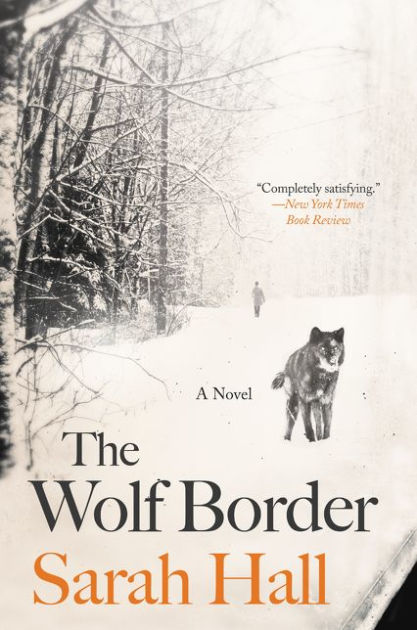
You can read more of Sarah Hall’s 2009 interview
with the Lunecy Review at: https://performativeutterance.wordpress.com/2011/07/28/sarah-hall-interviewed-2009/
Mark Brown
Senior Lecturer in English and Course Director for Sound and Communication
Sylvia Plath’s The Bell Jar is an exploration of the social, economic, and sexual pressure on young women that seems as relevant today as it was in the 1950s, when the book is set.
At first glance, The Bell Jar does not strike the reader as an overtly political novel. The key themes that present themselves, and for which the book is popularly renowned, are the explorations of growing up in America, mental illness, teenage suicide, and the angst of a young woman finding her way in a large and scary world of work, fashion, education, and relationships. Consequently, The Bell Jar is often seen as a rites of passage novel.
These concerns are given added interest for the reader by the autobiographical detail that haunts Esther’s Greenwood’s narrative and continues to hold the public’s attention.
The novel was originally published in 1963 under a pseudonym. At the time critics found the book to be a thoughtful exploration of a young woman’s mind. However, when the book was published under Plath’s own name in 1966 its reception was strongly influenced by the circumstances surrounding her suicide at the age of 30in 1963, just after the book’s original release. Much attention, unsurprisingly, has been given to the stormy relationship with her husband, the British poet Ted Hughes, and her relationship with her two children.
But is all the biographical attention to the novel justified. Well, to some extent it is. The Bell Jar is an account of Esther’s time at college, her experiences as a ‘guest editor’ on a New York magazine and her subsequent breakdown – all supported by a wealthy sponsor. Plath too went to an all-girl college, won a scholarship to Mademoiselle magazine and attempted suicide.
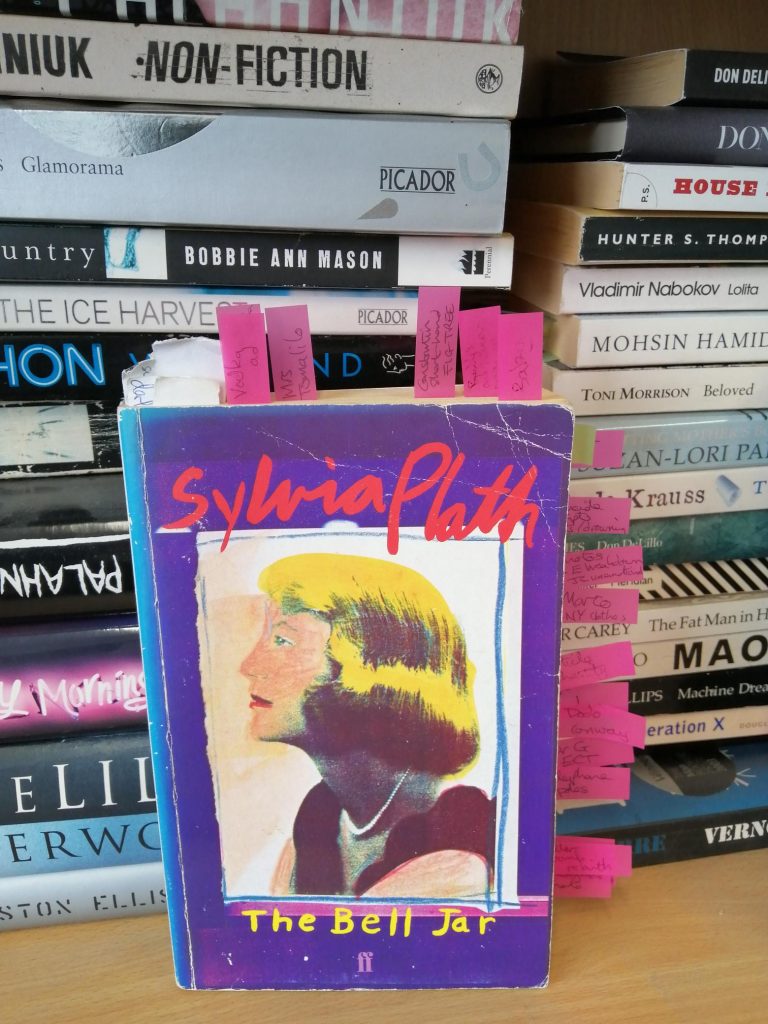
The title itself speaks of both clarity and constriction. The bell jar is a glass container in which the contents can be seen clearly but can also be read as the shop windows in which the fashion-conscious characters check their reflections.
But it is also about the suffocating constraints of Esther’s situation and society: fashion and commodity as part of 50s social ideology in America, the role of the patriarchal medical profession in Esther’s illness, and the constraints of the social and political environment on Esther’s gender role and in her relationships with men.
The novel’s opening reflects on the execution in the electric chair of the Rosenbergs for spying for the USSR and goes on to explore the effects of Electro Convulsive Therapy on Esther.
The issue of gender roles and freedom for women in this book is specifically related to the issue of sexual freedom. Before the pill, sexual and moral politics revolved around ideas of health, hygiene, and conformity. Esther’s mother, for example, sends her an article entitled ‘In Defense of Chastity’, which concludes that the best form of birth control is abstinence.
At the conclusion of the novel Esther is assessed by the hospital board for a return to the society that she has rejected. To do so she must show that she is a well-adjusted, socially integrated, mentally well citizen of 1950s American society. You will have to read the book to find out if she succeeds.
Amy Louise Blaney
Associate Lecturer in English
There are so many literary works by female authors that I adore: Margaret Atwood’s The Handmaid’s Tale, Maggie O’Farrell’s Hamnet, Jane Austen’s Northanger Abbey, Margaret Cavendish’s The Blazing World…the list goes on.
For this piece, though, I wanted to share my love of Donna Tartt’s debut novel, The Secret History. Partly because it is a brilliant piece of fiction that playfully inverts the rules of genre and can be seen to have kick-started a trend for so-called ‘dark academia’, but also because its conflicted central characters – and their struggles to find their place and identity within the world – continues to resonate with me in new ways every time I re-read the novel.
Set at an elite New England university, The Secret History tells the story of a close-knit group of six classic students who, it becomes apparent, have committed a terrible crime.
The novel is narrated by Richard Papen: a young man from a modest background who finds himself, through an unusual twist of fate, becoming part of an elite clique of students, hand-picked by charismatic classics professor Julian Morrow.
Richard’s position as an outsider is crucial to the novel. As the reader, we see the events of the novel solely through his eyes and we are, initially at least, invited to sympathise with this awkward, isolated young man, marooned and adrift amidst an elite world of apparent social, intellectual, and financial privilege.
As the novel progresses, however, the novel plays with and inverts ideas of tragedy, melodrama, and detective fiction to rewrite this singular worldview. As readers, we begin to question the veracity of Richard’s narrative and the plausibility of his perceptions. As we follow this murder mystery in reverse, we are invited to consider not who the killer is – we know this from the outset – but who the victim is and, more importantly, why they are the victim and what the significance of their murder is.
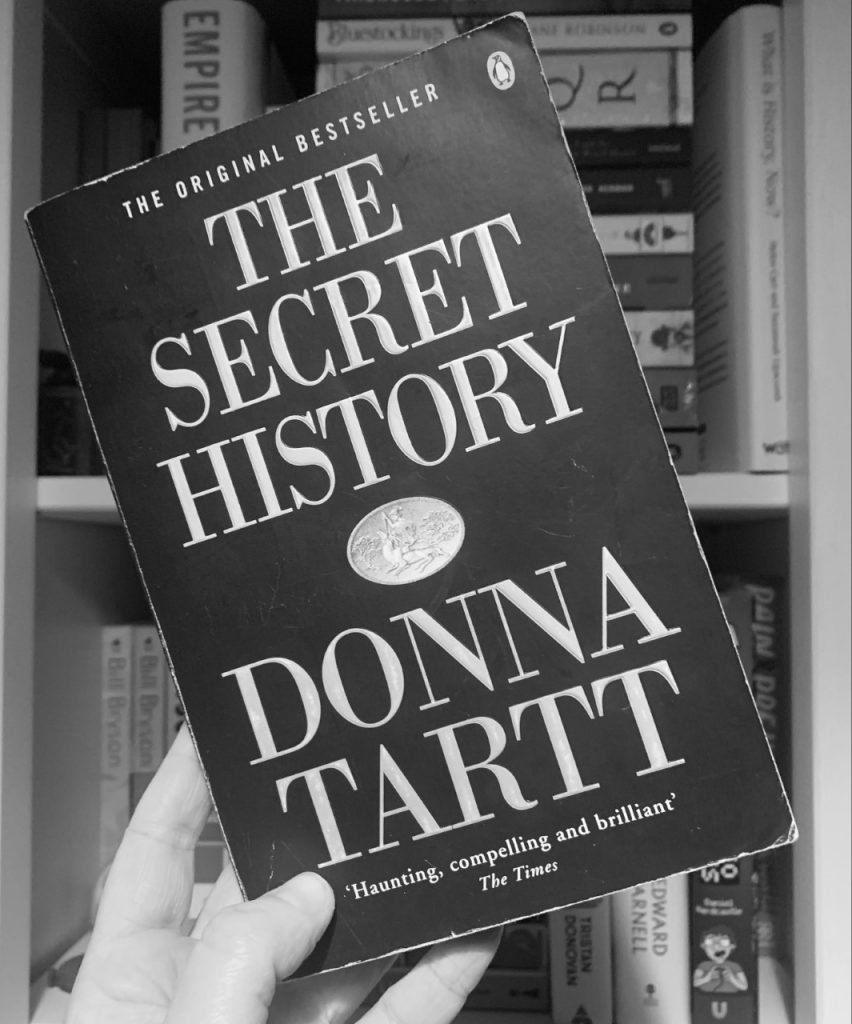
Simply put, The Secret History is, like all the best novels, a book that merits repeated reading and that, as I age and evolve as a reader, unpacks itself in new ways with each revisit. Read it, think about it, then put it on a shelf and come back to it in five- or ten-years’ time. I guarantee you will experience it again anew.
Want More Female-Authored Fiction?
The longlist for the 2022 Women’s Prize for Fiction was announced on International Women’s Day and contains a fantastic line-up on contemporary novels written by women. Past winners of the prize include Madeline Miller, Barbara Kingsolver, Tayari Jones, Ali Smith, Chimamanda Ngozi Adichie, Zadie Smith, Helen Dunmore and Carol Shields, whilst this year’s shortlist features novels by Louise Erdrich, Ruth Ozeki, and Elif Shafak amongst others.
Dickens’ Birthday
7 Februarty 1812:
Dickens’ 210th birthday today, as good a reason as any to spend a thought or two on this outstanding writer. It’s even a platitude to say that the work of this most inventive of Victorian novelists has withstood the test of time (and shedloads of literary and autobiographical criticism to boot) and remains relevant, instructive and enjoyable to this day. Nothing could be a better reminder of Dickens’s art, of his extraordinary treatment of language, than the following excerpt from Oliver Twist of 1837-39, the foundational first of the whole host of new Realist Victorian novels to follow. As a fledgling text, this novel very much strikes us as experimental still, a laboratory of various narrative forms and styles, ranging from topical investigative journalism to educational journey, as in Bildungsroman, and allegorical morality tale.
The passage below shows Dickens’s full potential as narrative magician, with similar fireworks going off in all of his later novels. New Victorian Realism in full cry: London waking up in the in the early morning to the hustle and bustle of a crowded day… The reader wonders: who is talking? It is not Sikes, nor Oliver, who are walking across the stage here. When the prose heats up, the narrator does the vanishing act of much of later Modernist ‘free indirect discourse’. Whose consciousness is streaming here? Might it be that of the big city itself? I always ask myself in passages like this: was Dickens really in charge of his writing here, or was he being written (so-to-speak) by language that wants breaking out? One could say that langue is driving a coach and horses through the authorial project in sections like this….
Dr Martin Jesinghausen
From Oliver Twist,
Chapter 21: The Expedition.
It was a cheerless morning when they got into the street; blowing and raining hard; and the clouds looking dull and stormy. The night had been very wet: large pools of water had collected in the road: and the kennels were overflowing. There was a faint glimmering of the coming day in the sky; but it rather aggravated than relieved the gloom of the scene: the sombre light only serving to pale that which the street lamps afforded, without shedding any warmer or brighter tints upon the wet house-tops, and dreary streets. There appeared to be nobody stirring in that quarter of the town; the windows of the houses were all closely shut; and the streets through which they passed, were noiseless and empty.
By the time they had turned into the Bethnal Green Road, the day had fairly begun to break. Many of the lamps were already extinguished; a few country waggons were slowly toiling on, towards London; now and then, a stage-coach, covered with mud, rattled briskly by: the driver bestowing, as he passed, an admonitory lash upon the heavy waggoner who, by keeping on the wrong side of the road, had endangered his arriving at the office, a quarter of a minute after his time. The public-houses, with gas-lights burning inside, were already open. By degrees, other shops began to be unclosed, and a few scattered people were met with. Then, came straggling groups of labourers going to their work; then, men and women with fish-baskets on their heads; donkey-carts laden with vegetables; chaise-carts filled with live-stock or whole carcasses of meat; milk-women with pails; an unbroken concourse of people, trudging out with various supplies to the eastern suburbs of the town. As they approached the City, the noise and traffic gradually increased; when they threaded the streets between Shoreditch and Smithfield, it had swelled into a roar of sound and bustle. It was as light as it was likely to be, till night came on again, and the busy morning of half the London population had begun.
Turning down Sun Street and Crown Street, and crossing Finsbury square, Mr. Sikes struck, by way of Chiswell Street, into Barbican: thence into Long Lane, and so into Smithfield; from which latter place arose a tumult of discordant sounds that filled Oliver Twist with amazement.
It was market-morning. The ground was covered, nearly ankle-deep, with filth and mire; a thick steam, perpetually rising from the reeking bodies of the cattle, and mingling with the fog, which seemed to rest upon the chimney-tops, hung heavily above. All the pens in the centre of the large area, and as many temporary pens as could be crowded into the vacant space, were filled with sheep; tied up to posts by the gutter side were long lines of beasts and oxen, three or four deep. Countrymen, butchers, drovers, hawkers, boys, thieves, idlers, and vagabonds of every low grade, were mingled together in a mass; the whistling of drovers, the barking dogs, the bellowing and plunging of the oxen, the bleating of sheep, the grunting and squeaking of pigs, the cries of hawkers, the shouts, oaths, and quarrelling on all sides; the ringing of bells and roar of voices, that issued from every public-house; the crowding, pushing, driving, beating, whooping and yelling; the hideous and discordant dim that resounded from every corner of the market; and the unwashed, unshaven, squalid, and dirty figures constantly running to and fro, and bursting in and out of the throng; rendered it a stunning and bewildering scene, which quite confounded the senses.
Mr. Sikes, dragging Oliver after him, elbowed his way through the thickest of the crowd, and bestowed very little attention on the numerous sights and sounds, which so astonished the boy. He nodded, twice or thrice, to a passing friend; and, resisting as many invitations to take a morning dram, pressed steadily onward, until they were clear of the turmoil, and had made their way through Hosier Lane into Holborn.
